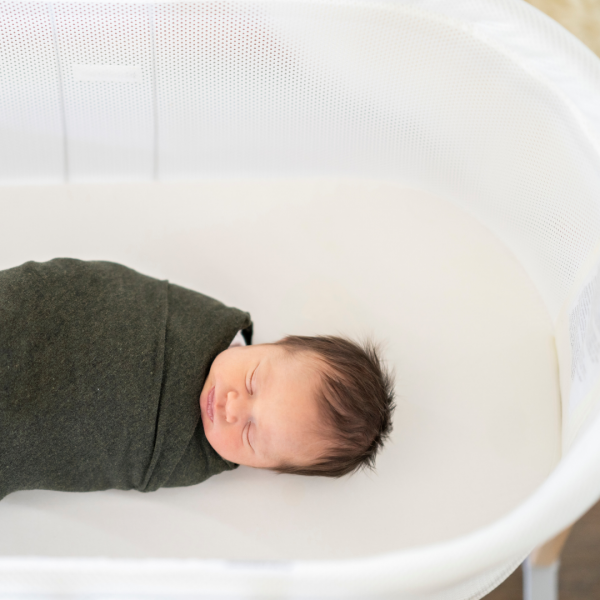
Congrats mamas and dads, you made it through the fourth trimester! Those first few months are about survival folks. There is a lot of eating, crying, singing lullabies, and rocking to sleep. We all savor the time while also being utterly exhausted!
As your baby enters the 4th month you’ll soon see that there are more periods of wake and more defined periods of sleep, but there likely isn’t much of a schedule at this point. So where do you start after the fourth trimester is over? You want to develop good sleep foundations, but don’t know where to begin.
First, let’s talk a little bit about newborn sleep versus the sleep your little baby now has. In the newborn phase (about the first two months) your baby went right into what is called “REM” or dreaming sleep. REM is most important for growth and development formation and boy were they doing A LOT of growing. Now about 4 months babies go into “Non-REM” sleep first, which they will continue to do for the rest of their life. Remember they aren’t “regressing”, but progressing in their sleep development.
Now that they are in their new sleep cycle arena you can start to teach them a little more about how to sleep. This is truly one of the first of many teacher moments you will have as a parent so try to enjoy it. Let’s talk about a few small steps to lay a strong foundation:
- Start to notice a nap pattern. Typically babies at about 4-6 months start to have 3 naps per day. The easiest nap to start with is the morning nap because their drive to sleep is often the highest at this time. Typically the first nap is 1-2 hours after waking. When you start to notice tired signs (ie; rubbing eyes, zoning out or not paying attention to the activity, pulling at ears, more clingy to the caregiver), place the baby in their safe sleep space, swaddle (if using), use pacifier (if using), then make sure baby is a little drowsy, but still awake. (See on sample baby sleep schedule on Instagram stories!)
- Create a bedtime routine that works for your family. Many people ask what to have in a bedtime routine and it’s different for every family. Remember it should be short, about 10-15 minutes, and include some pleasant activities such as reading a few books or singing songs. Try to keep the routine similar so the baby knows what to expect.
- Remember to fill the awake period with lots of developmentally appropriate activities such as practicing rolling over, tummy time, and social time with family and friends. At this age, babies are awake usually 1-2 hours between naps so use that time to engage.
If you feel lost, give yourself some grace! This is all so new for both you and baby. Try to step back and remember the keys to success are consistency, patience, and time. If you need more 1:1 guidance please reach out, you are never alone and Nested Sleep is always here to help!



